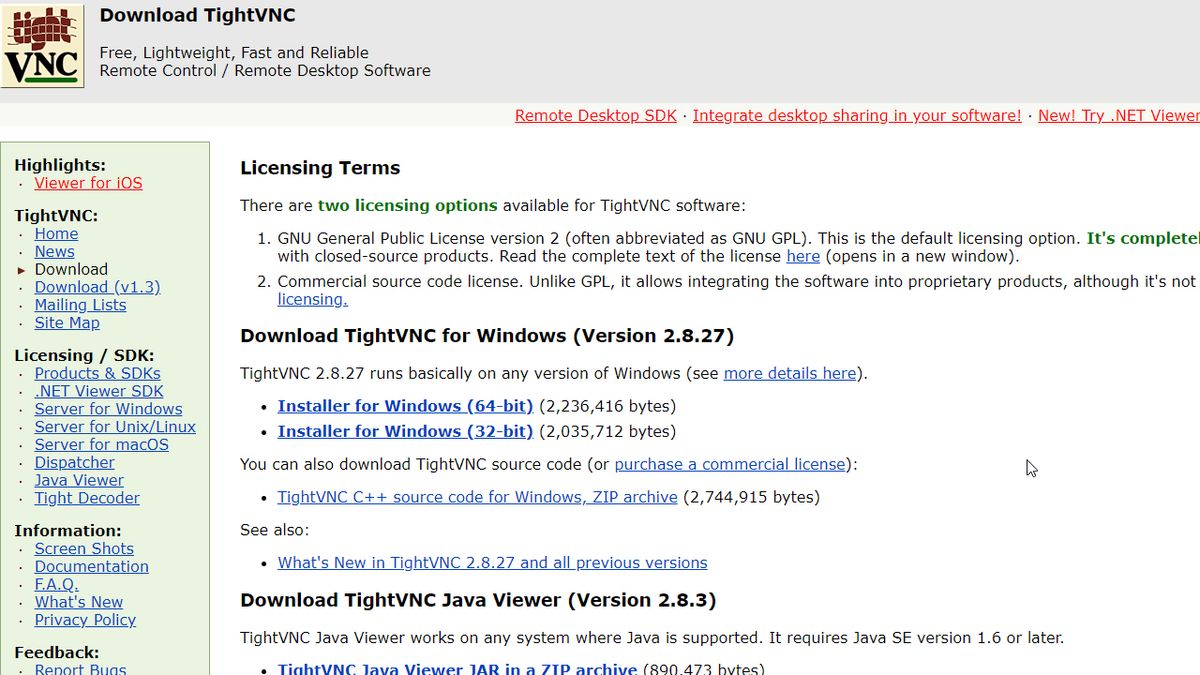
- Tightvnc server settings for mac android#
- Tightvnc server settings for mac password#
- Tightvnc server settings for mac free#
- Tightvnc server settings for mac windows#
If the VNC server is exposed to the internet, add the -localhost option to Xvnc in (note that -query localhost and -localhost are different switches) and follow #Accessing vncserver via SSH tunnels. Now any number of users can get unique desktops by connecting to port 5900.

Use systemctl to start and enable xvnc.socket. To get this running, first set up XDMCP and make sure the display manager is running.ĮxecStart=-/usr/bin/Xvnc -inetd -query localhost -geometry 1920x1080 -once -SecurityTypes=None The downside is that users cannot leave a session running on the server and reconnect to it later. This setup uses the display manager to authenticate users and login, so there is no need for VNC passwords. One can use systemd socket activation in combination with XDMCP to automatically spawn VNC servers for each user who attempts to login, so there is no need to set up one server/port per user. Running Xvnc with XDMCP for on demand sessions #ExecStart=/usr/bin/x0vncserver -PAMService=login -PlainUsers=$ -SecurityTypes=TLSPlain ~/.config/systemd/user/rvice ĮxecStartPre=/bin/sh -c 'while ! pgrep -U "$USER" Xorg do sleep 2 done'ĮxecStart=/usr/bin/x0vncserver -rfbauth %h/.vnc/passwd In order to have a VNC Server running x0vncserver, which is the easiest way for most users to quickly have remote access to the current desktop, create a systemd unit as follows replacing the user and the options with the desired ones: Starting and stopping x0vncserver via systemd See: Issue #529.Ī simple way to start x0vncserver is adding a line in one of the xprofile files such as:
Tightvnc server settings for mac free#
If another parallel server is needed, a second instance can then run on the next highest, free port, i.e 5902 (5900+2). The number in the file corresponds to a TCP port. Each user defined in this file will have a corresponding port on which its session will run.
Tightvnc server settings for mac password#

Running vncserver for virtual (headless) sessions Initial setup
Tightvnc server settings for mac windows#
Tightvnc server settings for mac android#



 0 kommentar(er)
0 kommentar(er)
